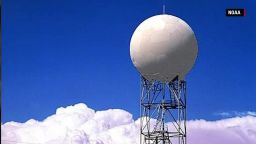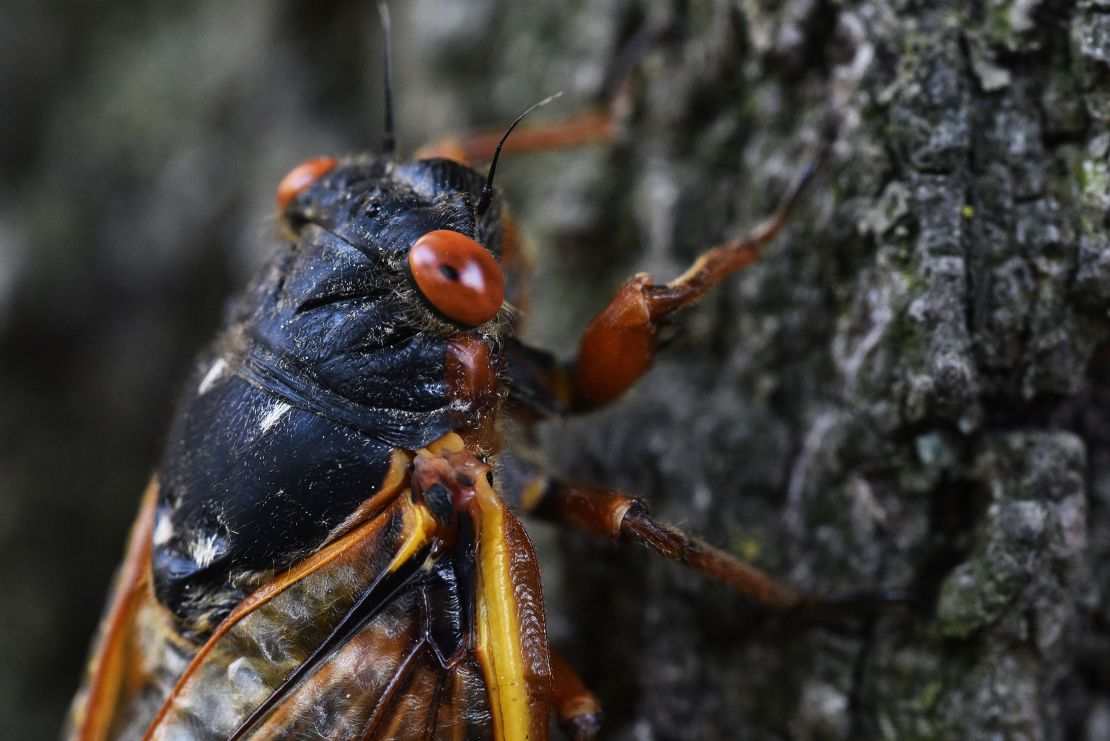It’s pretty natural for people to take a look at the radar first thing in the morning to check on the morning commute, but for millions, what looked like light drizzle over Germantown was actually a swarm of cicadas… what?
That’s right, the radar imagery from the Washington, DC, area showed a patch of green just northwest of the city.
What could have easily been mistaken for rain, wasn’t. The big, black-winged insects that have emerged after their 17-year slumber were in such large numbers, they showed up on radar.
“While weather radar is very precise, it would likely take hundreds of thousands, if not millions of cicadas to be able to see what we saw yesterday on radar,” said CNN meteorologist Dave Hennen.
The National Weather Service office in Baltimore/Washington, DC, tweeted this image, that caught a lot of attention over the weekend.
This phenomenon is something that we have seen before. Just last spring, millions of mayflies showed up on the radar over Lake Erie.
In Phoenix, it was bats that made an appearance on radar.
Radar can pick up smoke from wildfires, or a bird migration. It even “sees” the famous Austin, Texas, bats that migrate on an almost nightly basis from under the Congress Bridge.
How do weather radars detect insects?

Radar can pick up all kinds of atmospheric phenomenon beyond rain.
“Weather radar is now very sophisticated in what it can detect,” Hennen said. “The radar sends a beam of energy into the atmosphere and if it hits a ‘target’ it sends that information back to the radar.”
The radar can determine the size and shape of an object so it knows if it’s rain, hail, etc. or something else.
“Insects on radar is something we see all the time,” said Terry Schuur, a research scientist with the University of Oklahoma School of Meteorology. “Insects are just like raindrops; they reflect the radar’s energy back to the radar, just like a raindrop would.”
Both Hennen and Schuur agree that it could have been any kind of insect.
“They all return power to radar in their unique way,” Schuur said. “It could be cicadas or any other bug.
“If they are up there, the radar can see them,” Schuur said.
Cicadas or not cicadas?
Not everyone is convinced the radar showed cicadas.
“It’s highly unlikely it was cicadas,” said Nancy Hinkle, a professor of entomology at the University of Georgia.

“Cicadas don’t fly in groups, they don’t swarm and they are actually poor fliers,” Hinkle said.
She says cicadas don’t fly long distances, just short flights from tree to tree.
She believes it had to be another insect, since cicadas are only found at tree level and down, not higher in the atmosphere.
“We don’t know with absolute certainty that what we saw over the weekend was the cicadas, but we know with sunny skies over DC that it wasn’t precipitation being detected, and the National Weather Service was confident enough to tweet about it,” Hennen said.
This round of cicadas will be dying off in late June and early July, so we can look forward to the next time they come again, in 2038.
